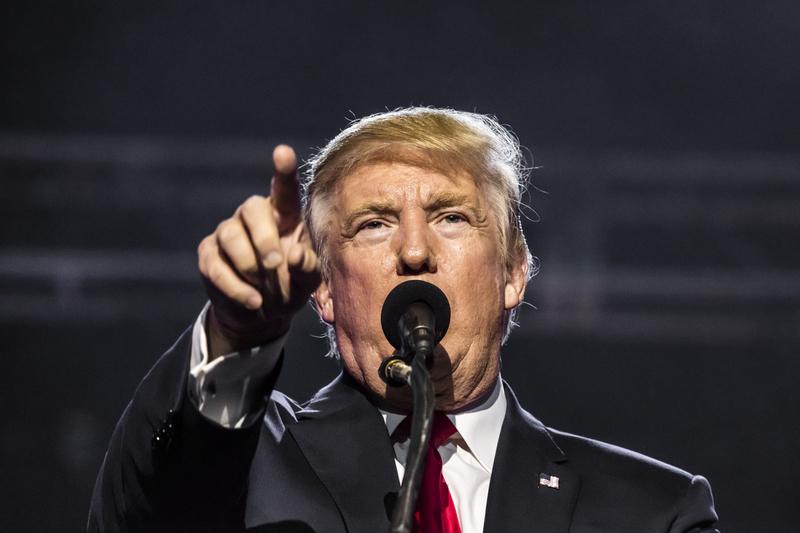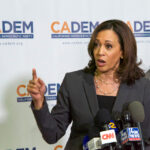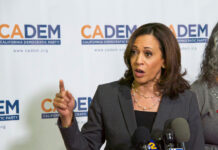U.S. President Donald Trump issued a directive on Wednesday, October 29, 2025, ordering the Pentagon to immediately resume nuclear weapons testing, marking a dramatic shift in American defense policy after 33 years without such tests. The announcement came right before Trump met with Chinese President Xi Jinping in Busan, South Korea, for trade negotiations.
Trump made the surprise declaration via Truth Social while aboard Marine One, flying to the meeting with the Chinese leader. “Because of other countries testing programs, I have instructed the Department of War to start testing our Nuclear Weapons on an equal basis. That process will begin immediately,” Trump posted on the social media platform.
The president indicated he was responding to testing programs by rival nuclear powers, particularly citing concerns about Russia’s second-place standing in nuclear capabilities and China’s rapidly expanding arsenal. Trump noted that while China currently ranks as a distant third, the country would achieve parity with top nuclear powers within five years.
The next day, aboard Air Force One on his return flight to Washington, Trump elaborated on the rationale behind the decision. He expressed that testing was necessary to ensure the United States maintains its position relative to rival nuclear powers. The president dismissed concerns about increased global risk, stating that U.S. weapon stocks were well-secured. He also indicated interest in pursuing denuclearization discussions, noting ongoing conversations with Russia that could potentially include China.
The timing of Trump’s announcement coincided with heightened nuclear tensions involving Russia. President Vladimir Putin announced Wednesday that Russia had successfully tested a Poseidon nuclear-powered super torpedo, which military analysts describe as capable of devastating coastal regions through massive radioactive ocean surges. Putin had also conducted tests of a Burevestnik cruise missile on Oct. 21 and nuclear launch drills on Oct. 22.
Trump’s directive follows substantial growth in China’s nuclear capabilities. Beijing has more than doubled its arsenal from an estimated 300 nuclear weapons in 2020 to approximately 600 in 2025, according to the Center for Strategic and International Studies. U.S. military officials project China will possess over 1,000 nuclear weapons by 2030. A September Victory Day parade revealed five nuclear capabilities with the range to reach the continental United States.
Current stockpiles show the United States maintaining 5,225 nuclear warheads, while Russia possesses 5,580, according to the Arms Control Association. The last U.S. nuclear test occurred in 1992, with most major nuclear powers except North Korea halting explosive nuclear testing in the 1990s. Russia’s last confirmed test took place in 1990, followed by the final U.S. test in 1992 and China’s in 1996. North Korea conducted its most recent nuclear test in 2017.
Uncertainty surrounds the specifics of Trump’s directive. The announcement did not clarify whether it referred to nuclear-explosive testing, which would fall under the National Nuclear Safety Administration’s jurisdiction, or flight testing of nuclear-capable missiles. The president indicated that specific nuclear test sites would be determined at a later date.
The announcement triggered immediate pushback from several quarters. Representative Dina Titus, a Nevada Democrat, stated on X that she would introduce legislation to halt the testing program. Daryl Kimball, director of the Arms Control Association, estimated it would require at least 36 months for the United States to resume contained underground nuclear tests at the former Nevada test site.
Kimball characterized Trump as misinformed, asserting the nation lacks technical, military, or political justification for resuming nuclear explosive testing. He warned the announcement could trigger a cascade of nuclear testing by U.S. adversaries and potentially undermine the nuclear Non-Proliferation Treaty. Beyond technical data collection, experts note such testing would represent a deliberate display of U.S. strategic power to Russia and China. Putin has repeatedly stated Russia would resume testing if the United States does.
Trump had previously discussed nuclear arms control with Putin in August, expressing interest in involving China. Beijing responded that participation in nuclear disarmament negotiations with the two larger nuclear powers was unreasonable and unrealistic, given China’s comparatively smaller arsenal. In February, Trump outlined intentions to pursue nuclear arms control efforts, proposing discussions with both Putin and Xi about imposing arsenal limits.
The United States initiated the nuclear era in July 1945 with a 20-kiloton atomic bomb test at Alamogordo, New Mexico. The country subsequently dropped atomic bombs on Hiroshima and Nagasaki in August 1945, forcing Japan’s surrender in World War II.











